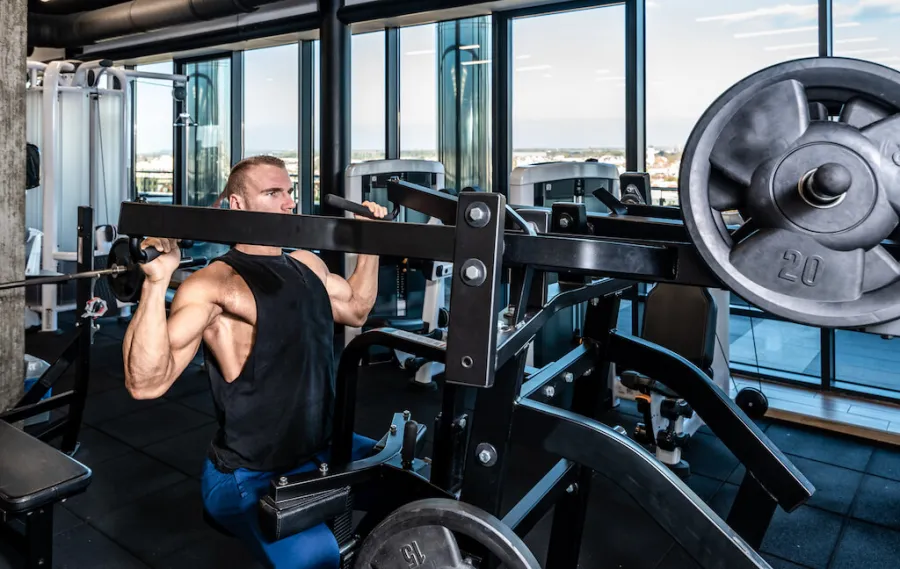
Unlocking Strength: Understanding Fixed Range of Motion in Resistance Training Equipment
Introduction
Resistance training is a cornerstone of fitness, offering a myriad of benefits ranging from muscle development to improved joint health. One aspect that varies among resistance training equipment is the range of motion they provide. Some equipment features a fixed range of motion, offering stability and targeted muscle engagement. In this comprehensive guide, we’ll explore the types of resistance training equipment that incorporate a fixed range of motion and delve into frequently asked questions surrounding this crucial aspect of strength training.
The Importance of Range of Motion
Before delving into the specifics of fixed range of motion equipment, it’s essential to understand the significance of range of motion in resistance training. Range of motion refers to the distance a joint can move between the flexed and extended positions. Achieving a full range of motion during exercises helps improve flexibility, joint function, and overall muscle engagement. However, certain training equipment limits the range of motion intentionally to isolate specific muscle groups and provide stability during workouts.
Types of Resistance Training Equipment with Fixed Range of Motion
1. Selectorized Strength Machines
Selectorized strength machines are a staple in many gyms and fitness centers. These machines feature a stack of weights and a pin that allows users to select the desired resistance. The fixed pathway of these machines ensures a controlled range of motion, making them suitable for beginners or individuals recovering from injuries.
2. Plate-Loaded Machines
Similar to selectorized machines, plate-loaded machines offer a fixed range of motion. Users load weight plates onto designated pegs, and the machine’s design dictates the motion’s trajectory. Plate-loaded machines provide versatility in terms of resistance adjustment while maintaining a consistent path for targeted muscle activation.
3. Cable Machines
Cable machines utilize a pulley system and cables to create resistance. While some cable machines offer adjustable heights for various exercises, the fixed path of the cables guides the range of motion. These machines are valuable for exercises like cable crossovers and triceps pushdowns, ensuring a controlled and focused workout.
4. Smith Machine
The Smith machine consists of a barbell fixed within steel rails, allowing vertical movement. While criticized by some for limiting the natural barbell movement, the Smith machine’s fixed range of motion can be advantageous for specific exercises, such as squats and bench presses, where stability is crucial.
5. Leg Press Machines
Leg press machines, whether vertical or horizontal, typically feature a fixed range of motion. Users push a weighted platform away from their body, engaging muscles in the legs and glutes. The fixed pathway ensures consistent muscle activation, making leg press machines effective for building lower-body strength.
6. Hammer Strength Machines
Hammer Strength machines are plate-loaded resistance machines designed to mimic free weight movements. These machines provide a fixed range of motion while allowing users to move in a more natural, biomechanically efficient manner. They are popular for targeting specific muscle groups with precision.
7. Isolation Machines
Various isolation machines focus on specific muscle groups, providing a fixed range of motion to isolate and intensify the targeted muscles. Examples include bicep curl machines, leg extension machines, and triceps dip machines.
8. Leg Curl Machines
Leg curl machines, whether seated or lying, involve bending the knee against resistance. The fixed range of motion in these machines ensures proper muscle engagement in the hamstrings and calf muscles.
9. Lat Pulldown Machines
Lat pulldown machines feature a cable system for engaging the muscles in the upper back and arms. The fixed range of motion helps individuals maintain proper form and concentrate on the targeted muscle groups.
10. Preacher Curl Benches
Preacher curl benches, often used with barbells or dumbbells, provide a fixed range of motion for bicep exercises. The bench’s design supports the arms, isolating the biceps and minimizing cheating during curls.
Frequently Asked Questions:
1. Is a fixed range of motion suitable for all fitness levels?
Fixed range of motion equipment is suitable for various fitness levels, but beginners and individuals recovering from injuries often find it particularly beneficial for its stability and ease of use.
2. Can fixed range of motion equipment contribute to muscle imbalances?
While fixed range of motion equipment can isolate specific muscles effectively, it’s crucial to incorporate a variety of exercises to prevent potential muscle imbalances. Balance is key for comprehensive strength development.
3. Are free weights or fixed range of motion machines better for building strength?
Both free weights and fixed range of motion machines have their merits. Free weights engage stabilizing muscles, while fixed range of motion machines provide targeted isolation. A balanced approach often yields optimal results.
4. Can fixed range of motion equipment be used for rehabilitation purposes?
Yes, fixed range of motion equipment is commonly used in rehabilitation settings. The controlled movements and stability they offer can aid in the recovery process for individuals with specific injuries or limitations.
5. Is it possible to customize the range of motion on certain machines?
While some machines may allow minor adjustments, the fixed range of motion is a fundamental characteristic. Machines are designed to guide users through specific pathways to target muscles effectively.
6. Do fixed range of motion machines limit functional fitness gains?
While functional fitness often emphasizes free, multi-joint movements, incorporating fixed range of motion machines strategically can complement a well-rounded fitness program.
7. Can fixed range of motion machines be used for full-body workouts?
Yes, many fixed range of motion machines target different muscle groups, enabling users to create comprehensive full-body workout routines. Combining these machines with other exercise modalities ensures a balanced approach.
8. Are there specific safety considerations when using fixed range of motion equipment?
Proper form is crucial to safety. Ensure that the machine is set up correctly, use an appropriate weight, and follow the machine’s guidelines for proper body positioning to reduce the risk of injury.
9. Can fixed range of motion equipment help with muscle hypertrophy?
Yes, fixed range of motion machines can contribute to muscle hypertrophy by allowing individuals to target specific muscles with controlled movements and consistent resistance.
10. How often should I incorporate fixed range of motion exercises into my workout routine?
The frequency of incorporating fixed range of motion exercises depends on individual fitness goals. Including them in your routine 1-3 times per week, alongside other types of exercises, can be effective for balanced strength development.
Conclusion
Understanding the role of fixed range of motion in resistance training equipment is essential for crafting effective workout routines. Whether you’re a seasoned gym-goer or a fitness novice, incorporating a variety of equipment, including those with a fixed range of motion, can contribute to a well-rounded and targeted approach to strength training. As with any exercise regimen, it’s crucial to tailor your workouts to your individual goals and fitness level, ensuring a safe and effective path to improved strength and overall well-being.


